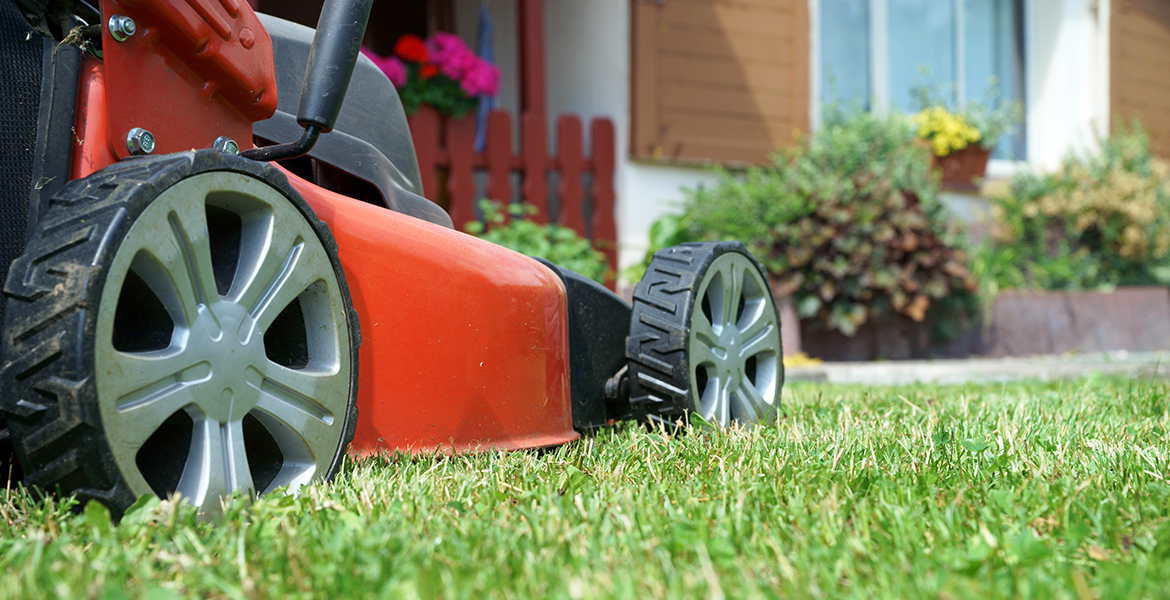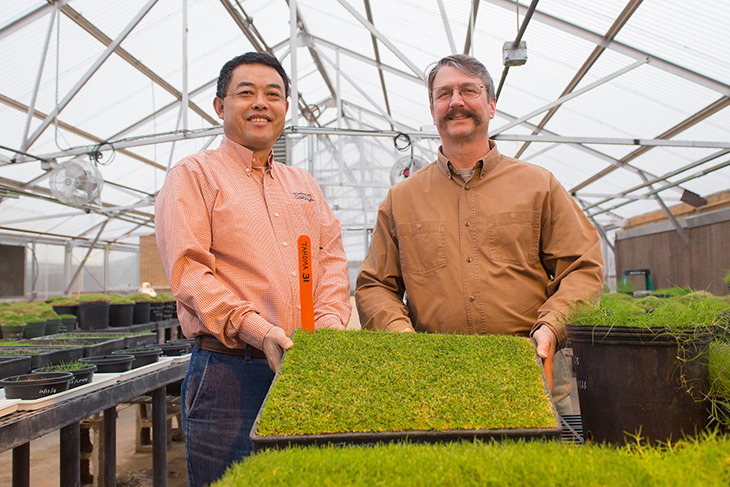
Adjust mowing frequency, cutting height on bermudagrass lawns
Friday, July 10, 2020
Homeowners with bermudagrass lawns need to match their summertime mowing schedule and cutting height with the variety grown, Oklahoma State University experts said.
Some people who grow newer bermudagrass hybrid lawns default to what they have done for many years in terms of mowing and then wonder what happened to the quality of their lawn, said Julia Laughlin, horticultural educator with the Oklahoma County Extension Office.
“Also, it’s hot,” she said. “Some homeowners mow too close to the ground for the variety planted because they’re trying to lessen the frequency of mowing to maximize personal comfort. Others let the grass grow past the recommended height it should be mowed.”
For example, the OSU-developed Tahoma 31 variety released in 2018 offers extremely fine texture, high density, excellent recovery to wear, tolerance to colder weather and good water-use efficiency. It is also best adapted to mowing heights between 0.38 and 1.5 inches.
An important consideration in mowing a lawn is that no more than a third of the grass plant should be removed at any one time:
- For a 1-inch mowed height, the grass should be allowed to grow only to 1.5 inches.
- For a 1.5-inch cut, mow the lawn when it reaches 2.25 inches in height.
- For a 2-inch cut, mow when the grass reaches 3 inches.
Fertilizer requirements are slightly higher at higher mowing heights because of the presence of more plant material. Turfgrasses grown under shady conditions should always be maintained at a slightly higher cut in order to increase leaf area to compensate for lower light levels. However, these same areas in shade should receive less nitrogen fertilizer because they typically have less plant material present than if they were the same height in full sunlight.
“The shoot density of a bermudagrass lawn also tends to decrease slightly at a higher mowing height because fewer lateral buds break dormancy to form shoots and more of the plant growth is directed upward rather than laterally,” said Dennis Martin, OSU Extension turfgrass specialist and member of the university’s Bermudagrass Development Team.
Martin said there have been mixed messages over the years concerning summer mowing height. While always raising the height of cut in summer does allow for deeper rooting, indiscriminate raising of the mowing height can cause scalping to be inevitable by late summer. Scalping is mowing the grass so low that you cut the shoots off at the growing point or crown. The taller the grass shoots, the higher the growing point.
“Scalping results in an uneven and ugly browning of the lawn, and the grass will need time to recover from the damage,” Martin said. “Raise cutting heights judiciously to help withstand heavy traffic and environmental stresses such as low soil moisture and extreme temperatures.”

Older, less dense common bermudagrass varieties are less prone to scalping when raising their cutting height during the summer. Modern, dense hybrid bermudagrasses perform best if not mowed at heights above 1.5 inches.
Popular bermudagrass varieties for Oklahoma lawns include: the newer vegetative hybrids Tahoma 31, TifTuf, Latitude 36, Northbridge and Iron Cutter; the improved seeded types Monaco, Riviera and Yukon; the old reliable vegetative hybrids Tifway and Astro; and U-3 common bermudagrass.
OSU Extension fact sheets are excellent resources to learn more about specific bermudagrass varieties suitable for Oklahoma and the region. They are available online and through all OSU Extension county offices.
Martin also provides insights into the Tahoma 31 and TifTuf bermudagrass varieties in a video segment produced as part of the Oklahoma Gardening television show.
“Remember that your grass will perform only as well as the lawn-management practices it receives,” Laughlin said. “Correct and timely fertilization, watering, mowing and control of weeds, insect pests and diseases will ensure your turfgrass is reaching its potential and looks the best it can.”
Regardless of the type of mower used, it is essential that blades be kept sharp and equipment in good operating condition, otherwise the effect can be:
- Bruised or torn leaf tips.
- Reduced plant health.
- A dull appearance caused by frayed leaf blades.
Other practices should include varying the mowing pattern 45-90 degrees from the prior pathway throughout the growing season to distribute wear, reduce soil compaction and improve turf appearance. Make turns on sidewalks and drives or make wide turns to avoid tearing the turf.
“Avoid mowing wet grass,” Laughlin said. “It is harder to obtain a quality cut, clippings form clumps on the mower and turf, and disease organisms are more likely to be spread.”
It is preferable not to bag grass clippings since collecting clippings removes valuable nutrients from the lawn, clippings take up valuable space in landfills and bagging clippings takes more time than mowing with a mulching mower.
OSU Extension is one of two state agencies administered by the university’s Division of Agricultural Sciences and Natural Resources and is a key part of OSU’s state and federally mandated teaching, research and Extension land-grant mission.
MEDIA CONTACT: Donald Stotts | Agricultural Communications Services | 405-744-4079 | donald.stotts@okstate.edu
